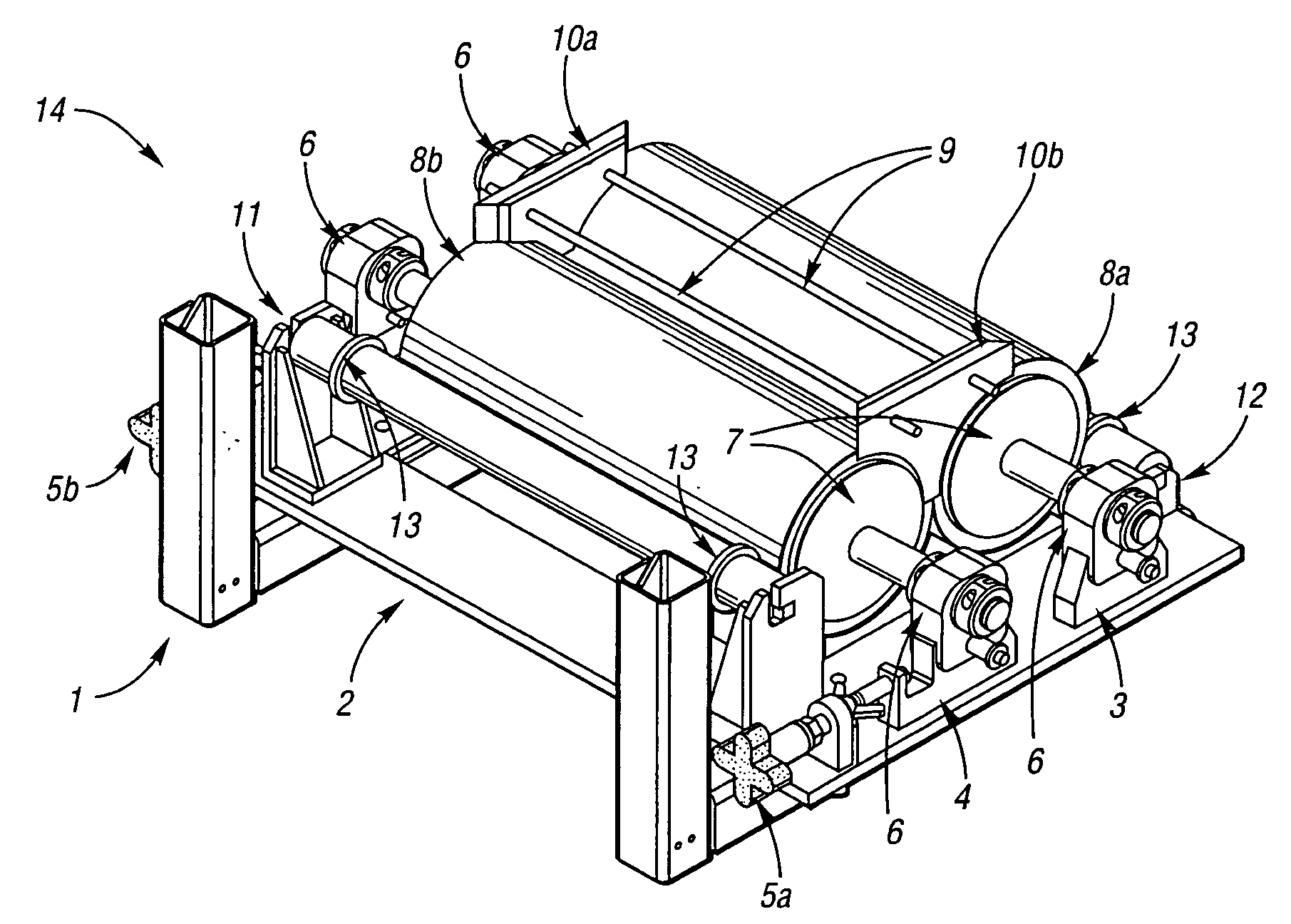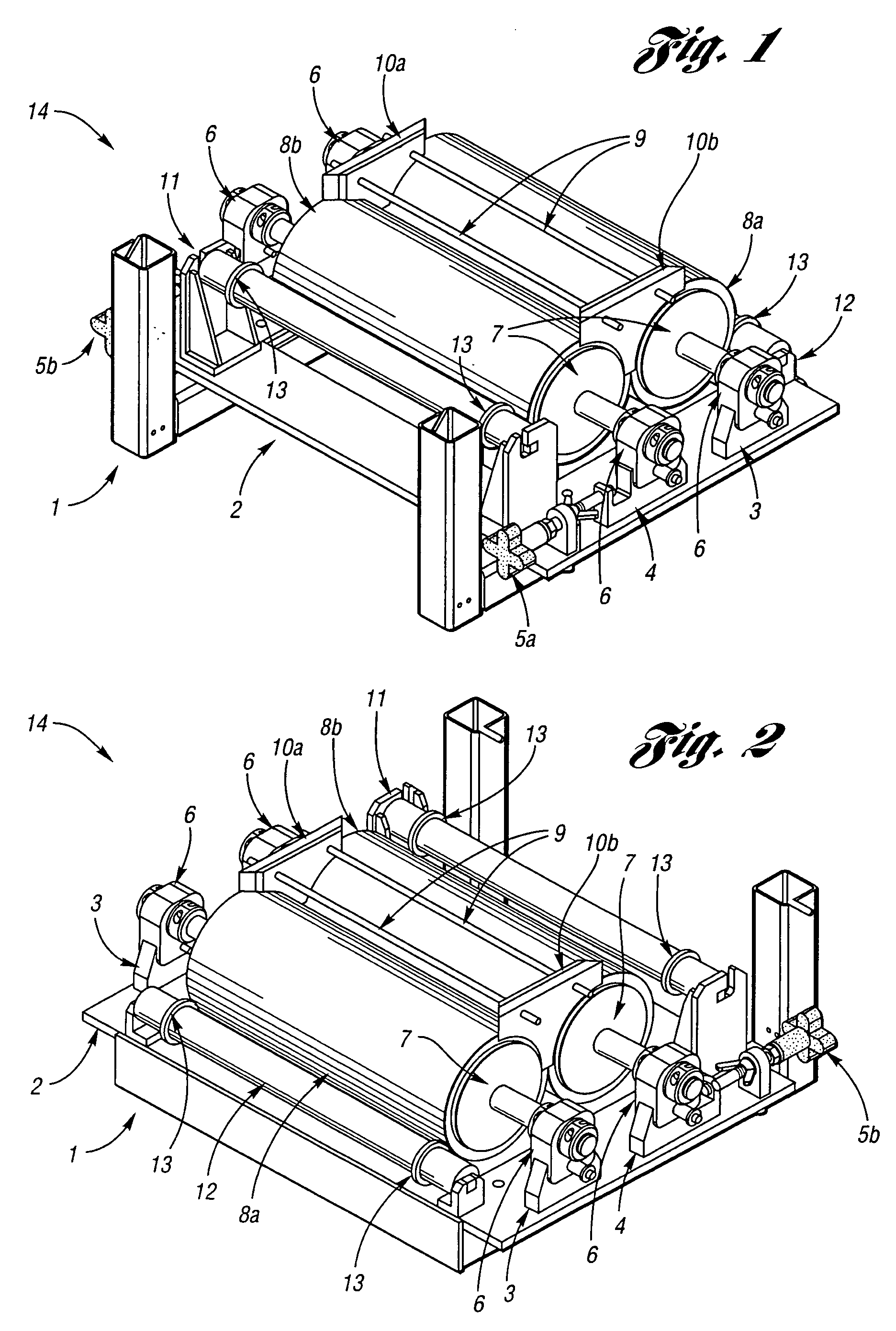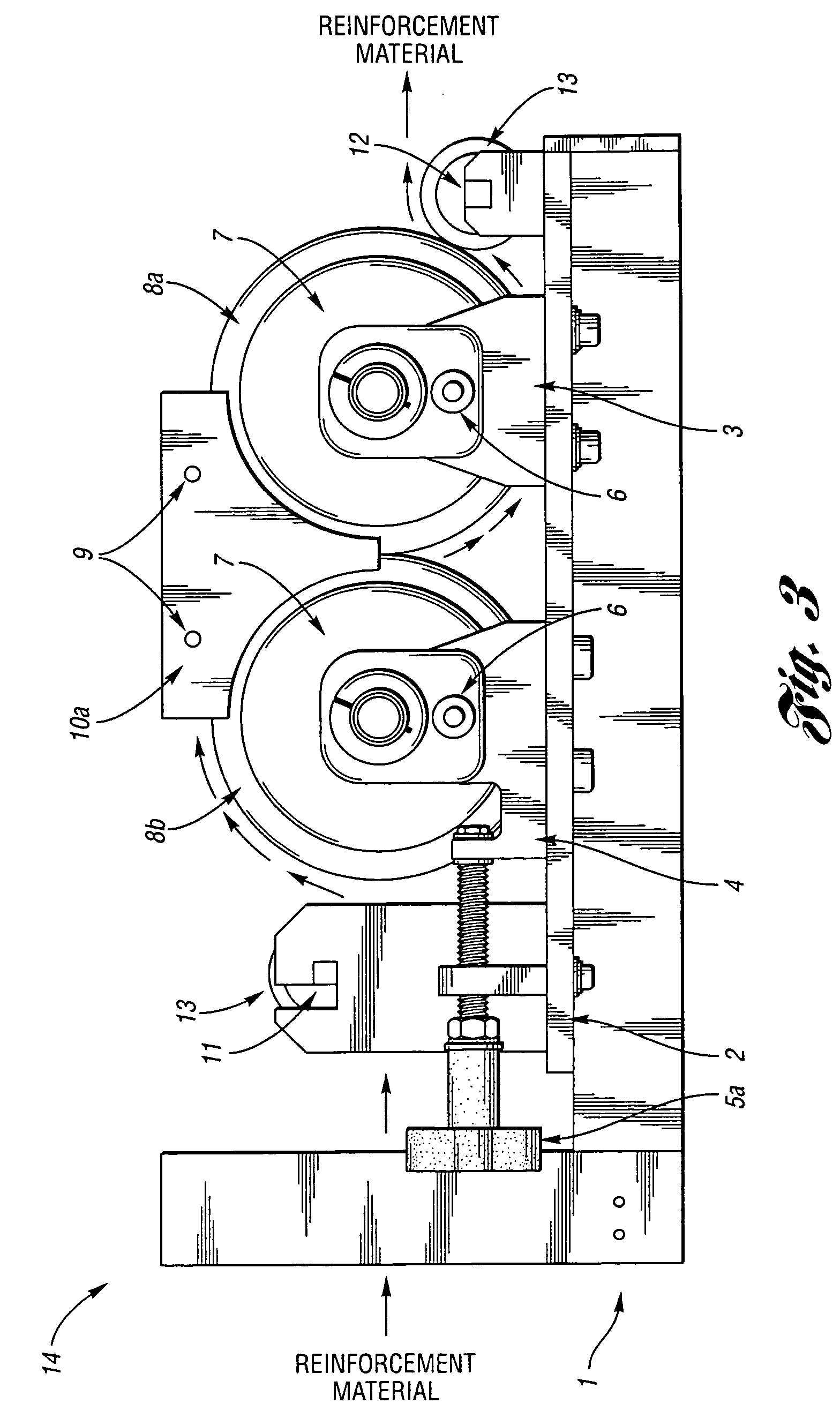Apparatus for resin-impregnation of fibers for filament winding
a technology of filament winding and filament, which is applied in the direction of liquid/gas/vapor textile treatment, textiles, coatings, etc., can solve the problems of increasing the time required for clean-up, break-down and set-up of the system, and significant resin waste during processing and cleaning. achieve the effect of increasing the rate at which reinforcement materials can be impregnated, reducing and increasing the number of filament windings
- Summary
- Abstract
- Description
- Claims
- Application Information
AI Technical Summary
Benefits of technology
Problems solved by technology
Method used
Image
Examples
Embodiment Construction
)
[0018] While this invention may be embodied in many different forms, there are described in detail herein specific preferred embodiments of the invention. This description is an exemplification of the principles of the invention and is not intended to limit the invention to the particular embodiments illustrated. Furthermore, while the apparatus is described for use in preparing fiber reinforcement for use in filament winding processes, the apparatus may also be used to impregnate fiber reinforcement with resin for use in other processes as well, for example the preparation of prepreg materials.
[0019] Thus, one aspect of the invention pertains to a process for the impregnation of fiber reinforcement for use in filament winding, this process including the steps of: supplying at least one continuous fiber reinforcing material; passing the fiber reinforcing material around a tensioning device and over a first cylindrical impregnation roller; passing the fiber reinforcing material thr...
PUM
| Property | Measurement | Unit |
|---|---|---|
| thickness | aaaaa | aaaaa |
| thickness | aaaaa | aaaaa |
| strength | aaaaa | aaaaa |
Abstract
Description
Claims
Application Information
 Login to View More
Login to View More - R&D
- Intellectual Property
- Life Sciences
- Materials
- Tech Scout
- Unparalleled Data Quality
- Higher Quality Content
- 60% Fewer Hallucinations
Browse by: Latest US Patents, China's latest patents, Technical Efficacy Thesaurus, Application Domain, Technology Topic, Popular Technical Reports.
© 2025 PatSnap. All rights reserved.Legal|Privacy policy|Modern Slavery Act Transparency Statement|Sitemap|About US| Contact US: help@patsnap.com



